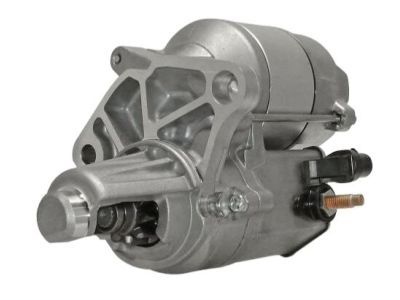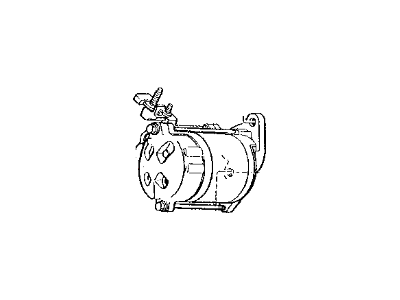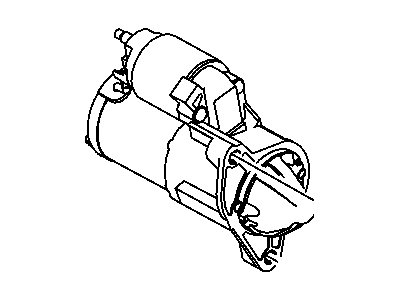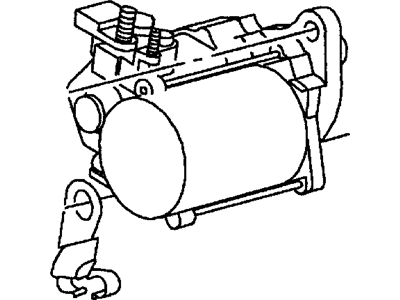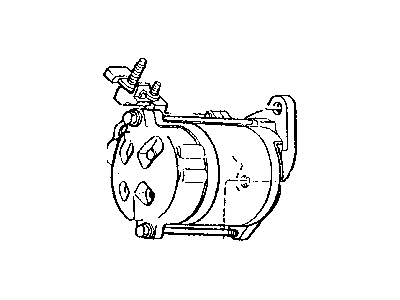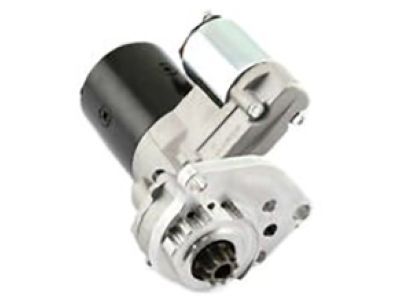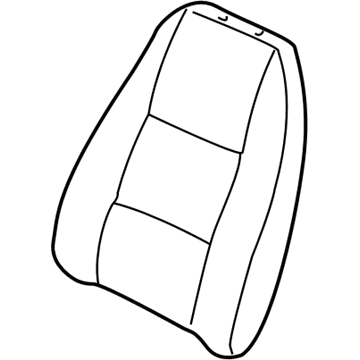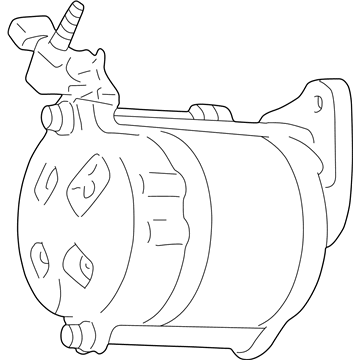
My Garage
My Account
Cart
Genuine Dodge Dakota Starter Motor
Starter Ignition- Select Vehicle by Model
- Select Vehicle by VIN
Select Vehicle by Model
orMake
Model
Year
Select Vehicle by VIN
For the most accurate results, select vehicle by your VIN (Vehicle Identification Number).
20 Starter motors found
Dodge Dakota Starter Motor
Starter Motor Motor is used in Dodge Dakota vehicles Compact pickup Trucks to convert the electrical energy from the battery into mechanical energy to crank the engine. It is powered by an externally offset solenoid which is tapped to the battery to energize the starter motor. In the starter, there is a rotating armature which is identical with the field coils or permanent magnets in order to produce requisite torque. It consists of a starter drive that gets in touch with the flywheels of the engine once the ignition is started, and an overrunning clutch that disengages the starter as soon as the engine starts running. Through the years, there were different versions of the Dodge Dakota and the type of starter used in the models of the car are usually electric starters as these are the most popular types. There are gear reduction starters which have made it more efficient and smaller than before. Nevertheless, the standard OE starters may not work properly with the high-compression engines and this may lead to some failure. Therefore, performance applications are likely to necessitate the use of special starters which are normally more durable together with performing better.
Looking for affordable and high-quality auto parts? Then you have already arrived at the proper online shop. We offer all Dodge Dakota Starter Motor at great affordable prices. Moreover, all genuine Dodge Dakota Starter Motor come with a manufacturer's warranty. In the long run, you would realize you have saved a lot of trouble and money with OEM parts from here.
Dodge Dakota Starter Motor Parts Questions & Experts Answers
- Q: How to Check Starting Circuit and Starter Motor on Dodge Dakota?A:Check the Battery Cable clamps, cables, battery, starter motor wiring and connections, mounting bolts, fuses, ignition switch circuit, starter relay, and TR sensor. If voltage is not available to the starter solenoid, check the fuses and starter relay. If the starter turns over slowly, check the starter cranking voltage and current draw. Remove and check the starter motor assembly on the bench. Install jumper cables from a test battery to the starter and observe the solenoid plunger, shift lever, and overrunning clutch. If the solenoid plunger extends and rotates the pinion drive, the starter assembly is operating properly.
- Q: How to Remove and Install a Starter Motor on a Dodge Dakota?A:Disconnect the cable from the negative terminal of the battery. Raise the vehicle and support it securely on jackstands. On 4WD models with certain transmissions, there's a support bracket between the front axle and the side of the transmission that blocks access to the lower starter mounting bolt. If your vehicle has this support bracket, remove the two support bracket bolts at the transmission, then pry the support bracket aside enough to gain access to the lower starter mounting bolt. Additionally, on some 4WD models the driveshaft will have to be detached from the front differential companion flange for access to the starter mounting bolts. Remove the heat shield, if equipped, from the starter motor. Remove the nut that secures the battery cable to the terminal stud on the starter solenoid, disconnect the cable from the terminal stud and disconnect the electrical connector from the spade terminal on the solenoid. Remove the two starter mounting bolts. Move the starter motor toward the front of the vehicle until the nose of the starter pinion housing clears the transmission bell housing then tilt the nose down and, if you haven't already done so, lower the starter until you can disconnect the electrical connector and remove the nut that secures the battery cable to the terminal stud on the starter solenoid. Once everything is disconnected, remove the starter. The starter motor is fairly heavy, so be sure to support it while removing it. Do NOT allow it to hang by the wiring harness. Installation is the reverse of removal. Loosen the lug nuts on the right front wheel. Raise the vehicle and place it securely on jackstands. Remove the right front wheel. Remove the splash shield from the right front wheel housing. On some 4WD models with certain transmissions, there's a support bracket between the front axle and the side of the transmission that blocks access to the lower starter mounting bolt. If your vehicle has this support bracket, remove the two support bracket bolts at the transmission, then pry the support bracket aside enough to gain access to the lower starter mounting bolt. Disconnect the battery cable and electrical connector from the terminals on the starter motor solenoid. Remove the two starter motor mounting bolts and remove the starter motor assembly. Installation is the reverse of removal.
Related Dodge Dakota Parts
Browse by Year
2011 Starter Motor 2010 Starter Motor 2009 Starter Motor 2008 Starter Motor 2007 Starter Motor 2006 Starter Motor 2005 Starter Motor 2004 Starter Motor 2003 Starter Motor 2002 Starter Motor 2001 Starter Motor 2000 Starter Motor 1999 Starter Motor 1998 Starter Motor 1997 Starter Motor 1996 Starter Motor 1995 Starter Motor 1994 Starter Motor 1993 Starter Motor 1992 Starter Motor 1991 Starter Motor 1990 Starter Motor








